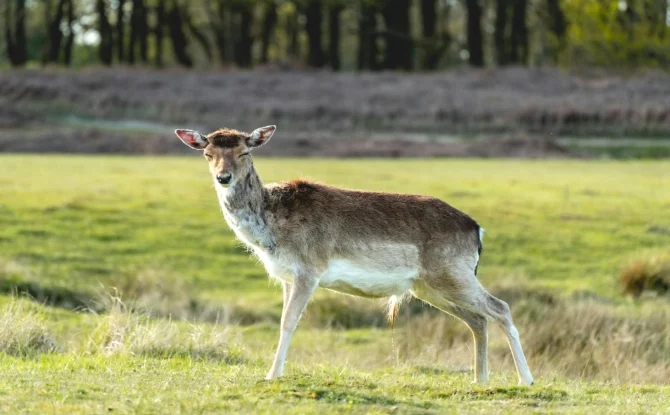Fallow Deer
The Fallow Deer is a medium-sized deer species recognized for its elegant spotted coat and broad, palmate antlers. Native to Europe but widely introduced, it inhabits woodlands, grasslands, and parklands, thriving in diverse environments with remarkable adaptability.
The fallow deer (Dama dama) is a medium-sized species admired for its unique appearance and broad global range. Originally from the Mediterranean region, they were introduced across Europe and beyond. Today, they can be found in woodlands, grasslands, and parks.
These deer come in various colors, including common tan with white spots, black, white, and even menil (a mix of light and dark). Native to Iran, the Persian fallow deer is a rare and unique subspecies. Males, called bucks, grow impressive palmate (broad and flat) antlers, especially during the rutting season.
Fallow deer usually weigh 70–220 pounds and reach 2.5–3.5 feet in shoulder height. They eat grasses, leaves, and herbs. Notably, some white or black individuals can be quite striking, and the world record fallow deer antlers often come from managed estates.

Did You Know?
Male Fallow Deer are called bucks, females are does, and young ones are fawns.
Quick Facts
Scientific Name:
Dama dama
Fallow Deer Lifespan:
12–16 Years (wild)
Fallow Deer Colors:
Brown with white spots, black, white, or dark
What do Fallow Deer Eat:
Grasses, leaves, bark, acorns
Where are Fallow Deer From:
Mediterranean, spread worldwide
How Big are Fallow Deer:
Males 60–100 kg, Females 30–50 kg
